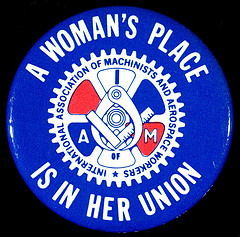I encourage everyone to go read this very smart and very sad essay from Alex Andreuo at The Guardian. It’s a condemnation of defensive architecture, a euphemism for strategies that make the urban landscape inhospitable to the homeless.
They include benches with dividers that make it impossible to lie down, spikes and protrusions on window ledges and in front of store windows, forests of pointed cement structures under bridges and freeways, emissions of high pitched sounds, and sprinklers that intermittently go off on sidewalks to prevent camping overnight. There is also perpetually sticky anti-climb paint and corner urination guards, plus “viewing gardens” that take up space that might be attractive to homeless people. Here are some examples from a collection at Dismal Garden.
Andreuo writes of the psychological effect of these structures. They tell homeless people quite clearly that they are not wanted and that others not only don’t care, but are actively antagonistic to their comfort and well being. He says:
Defensive architecture is revealing on a number of levels, because it is not the product of accident or thoughtlessness, but a thought process. It is a sort of unkindness that is considered, designed, approved, funded and made real with the explicit motive to exclude and harass. It reveals how corporate hygiene has overridden human considerations…
If the corporations have turned to aggressive tactics, governments seem to simply be in denial. They offer few resources to homeless people and the ones they do offer are insufficient to serve everyone. Andreuo continues:
We curse the destitute for urinating in public spaces with no thought about how far the nearest free public toilet might be. We blame them for their poor hygiene without questioning the lack of public facilities for washing… Free shelters, unless one belongs to a particularly vulnerable group, are actually extremely rare.
He then connects the dots. “Fundamental misunderstanding of destitution,” he argues, “is designed to exonerate the rest from responsibility and insulate them from perceiving risk.” If homeless people are just failing to do right by themselves or take the help available to them, then only they are to blame for their situation. And, if only they are to blame, we don’t have to worry that, given just the right turn of events, it could happen to us.
Cross-posted at Pacific Standard.
Lisa Wade, PhD is an Associate Professor at Tulane University. She is the author of American Hookup, a book about college sexual culture; a textbook about gender; and a forthcoming introductory text: Terrible Magnificent Sociology. You can follow her on Twitter and Instagram.













